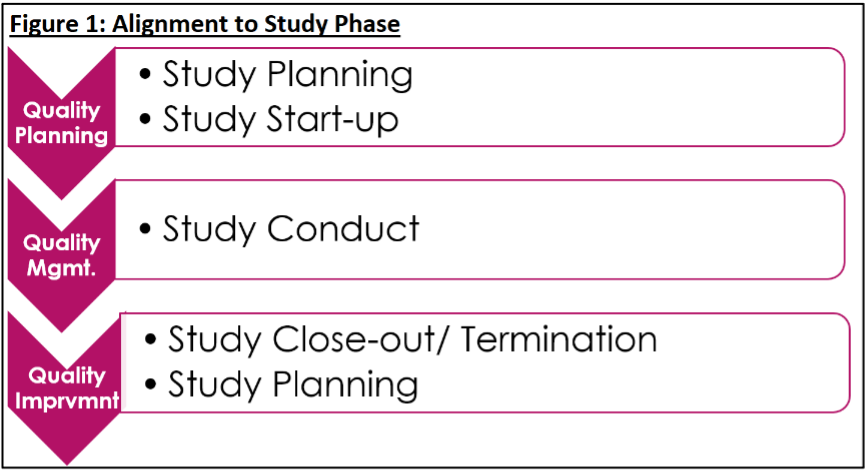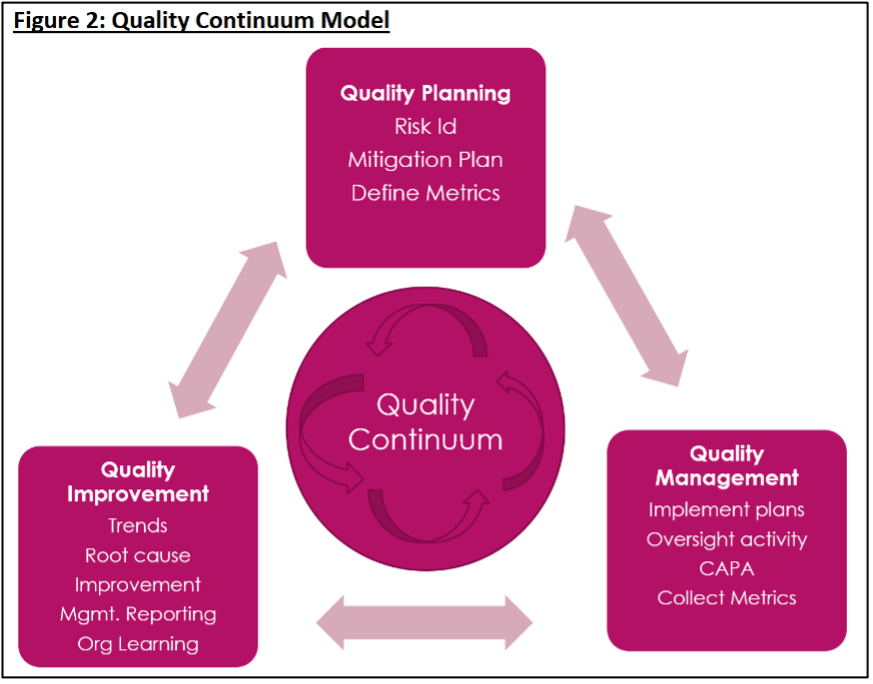Quality Management Systems Demand Continuous Improvement
The biopharmaceutical industry must establish customized approaches to managing Quality Management Systems within their clinical trials processes.
The biopharmaceutical industry must establish customized approaches to managing Quality Management Systems (QMS) within their clinical trials processes. However, few have deliberated on how to build and sustain QMS' throughout therapeutic development lifecycles. Arti Bajpai of Compliance and Quality Integration (CQI) Consulting elaborated on the importance of sustainable quality management systems at CROWN Congress in 2017. There will be more discussion on the topic of quality management at ExL’s 7th CROWN Congress is occurring on January 23-25, 2018 in Philadelphia.
Moe Alsumidaie: Can you describe QMS and how it connects to RBM?
Arti Bajpai

Arti Bajpai: A simple way to think of QMS is the connectivity and flow from internal strategy supported by robust processes, tools, and qualified people working in harmony. Collection and analysis of quality and performance metrics enable data driven course adjustments and decision making within an organization. A well-established QMS can help drive towards an organizational culture of compliance. QMS, when implemented effectively, can inform the organization on potential enterprise and study level risks and allow informed decision making for managing those risks.
Risk Based Monitoring (RBM) in the clinical trials space implies that one must understand the risks within a given program to develop risk based monitoring and mitigation plans. In my assessment, RBM is a component of a fully functioning QMS. At the onset of RBM, its intent and impact was misunderstood. However, biopharmaceutical enterprises now understand that to know what to monitor using the RBM approach, they must first identify the risks in program and study design and implement a risk mitigation plan, thereby utilizing the concepts of Quality by Design (QbD). In addition, it should be noted that the investigative sites are a critical partner and have direct impact on successful outcomes and in quality of clinical data. The concepts described in this paper can be adapted by the Investigators sites to improve upon their deliverables.
An approach termed “Quality Continuum” demonstrates sets of activities, steps, and actions taken during the lifecycle of a clinical trial to collect, analyze, and act upon information resulting from a clinical trial or program and utilizing that information to continuously improve upon the overarching QMS. A mature quality continuum can move an organization from reactive to a data driven proactive learning organization.
MA: Can you describe the Quality Continuum Model?
Figure 1

AB: Current risk management strategies tend to degrade and lose efficiency from one study to another, and learnings are not carried forward from previous studies. The quality continuum model is intended to provide a tactical methodology to organize activities for integrating and implementing quality risk management in real time, while incorporating the RBM and quality by design (QbD) methodologies in clinical trials execution. Moreover, the cyclical nature of the quality continuum is designed to flow from one phase of the study to the next, and can facilitate
Figure 2

knowledge management and organizational learning. For example, Quality Continuum steps flow between study start up, study conduct, and closeout time point and align with quality planning, quality management, and quality improvement activities and deliverables, respectively. The activities and related deliverables build, support, and lead from one phase to the next. (Figures 1 and 2):
Quality Planning Phase Activities
In this phase, a study team would prospectively establish quality goals in parallel to study design. Assessment and Identification of risks in protocol design and critical to quality parameters are established. Risk mitigation plans are developed, and quality agreements are put into place with vendors and outsourced partners. The key performance and quality indicators are defined based on mitigation plans and quality agreements.
Quality Management Activities
During this phase, the risk mitigation and quality plans established during the quality planning phase are implemented. Any emergent GCP non-compliance issues or deviations are identified, managed, and tracked during the conduct of a trial. CAPAs are established as needed and QA audits are conducted, responses to audits are generated, and metrics are collected. Oversight of vendors and site monitoring activities are conducted, and any identified issues are resolved. Finally, the critical step for collection of quality and performance metrics occurs in this phase. The metrics should come not only from audit and monitoring activities but also from GCP non-compliance issues, CAPAs, and other critical to quality activities supporting clinical trial processes.
Quality Improvement Activities
This final phase includes trending and analysis of metrics, leading to identification of systemic issues and key areas for improvement. Successful execution of activities in this phase can lead to cross functional learnings, information flow to management, and data driven decision making and course corrections. Cross functional communication, knowledge sharing, and governance reporting are essential for success in this phase and have the potential to drive organizational culture of compliance.
Due to competing priorities, limited resources, exasperated by lack of established processes to utilize the data resulting from Quality Management phase, the activities in this phase are by far the most neglected and contribute to overall weaknesses in the QMS.
The Quality Continuum model and framework are agnostic to the size and structure of an organization. The model is built on tasks which are typical and a routine part of clinical trial management and can be adopted by existing operational and quality organizations. Understanding the Quality Continuum principles and adapting to the framework can enable an organization to utilize this model in a way that fits within the current organizational structure.
If properly executed and controlled, this model has the potential to drive an organization from a mindset of “quality as a rule” to “quality as a culture”. The keys to success are a partnership between operational groups and quality organizations, minimization of silo,s and evolved leadership.
MA: You mentioned that specific skillsets are required to implement QMSs in the new ICH Addendum. Can you describe these skillsets?
AB: Firstly, multiple functions supporting clinical development must evolve simultaneously to meet the demands of the regulators and the public. Any one part of an organization should not change in isolation. Organizations must learn effective communication and use metric driven approaches, rather than tribal knowledge for course correction. To achieve this, Quality and Operational functions will need access to skills and tools such as, data analytics, process improvement methodology (LEAN, Six Sigma etc.), root cause detection methodologies, and project management. These skills and tools can aid in understanding audit data, metrics, and root causes so that corrective and preventive actions (CAPA) processes are effective and improvements are driven systematically. Quality professionals in partnership with operations need the ability to drive effective evaluation and assessments to clearly articulate a repetitive weakness or compliance issue, its root cause(s) and appropriate long term permanent fixes.
MA: How can Clinical Operations functions better interact with Quality Assurance (QA) and Compliance functions?
AB: Clinical Operations and Quality Organizations can sometimes operate in reactive and timeline driven environment. Although they have the same goal of achieving clinical trial quality, they can often operate in silos. There are many reasons for these silos. In my assessment both organizations working together achieve greater quality and success than working separately. As an example, QA and compliance professionals tend to work across therapeutic areas and can share their learnings and help the clinical functions proactively plan for known risks and avoid preventable issues. Quality Professionals can provide objectivity in a process solution, vendor selection, as well as help organizations avoid or manage compliance deviations. In my opinion various Quality roles and operations are two sides of the same coin and together they can make significant contributions the QMS. QA professionals can be a catalyst to drive quality transformations needed in the biopharmaceutical industry.
Moe Alsumidaie, MBA, MSF is Chief Data Scientist at Annex Clinical, and Editorial Advisory Board member for and regular contributor to Applied Clinical Trials.